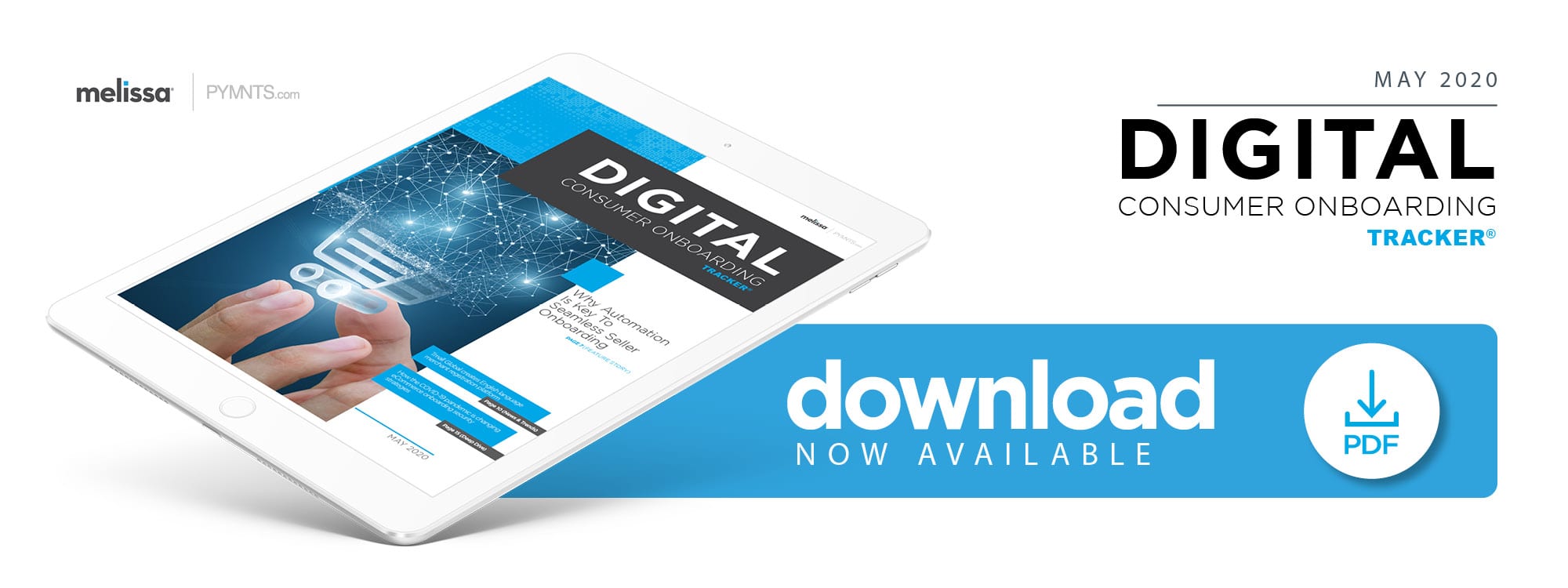Online sales have risen approximately 25 percent since the start of March, according to recent research, with consumers making more eCommerce purchases as they adhere to stay-at-home orders during the COVID-19 pandemic. Platforms are rushing to fulfill these orders, but they must fend off a growing number of fraud attempts while keeping business partners and sellers happy.
Ensuring sellers can seamlessly onboard is always critical for online marketplaces, but the pandemic has given the process new weight. Individuals providing handmade goods want to capitalize on recent upticks in demand for their products, for example, and are thus searching for marketplaces that offer frictionless onboarding so they can begin selling as quickly as possible, Jonathan Peacock, founder and CEO of eCommerce sales platform Zibbet, told PYMNTS in a recent interview. He explained that those forced to complete the onboarding process at each marketplace may not find it worthwhile.
“When a seller gets started on a new marketplace or platform, it is generally a time-consuming and painful process,” Peacock explained. “Some sellers have told us that it has taken them up to a month to get all of their products listed onto a new platform. We knew it was important that we streamline this process to make it faster than ever before to get started.”
Zibbet helps sellers enact a cross-platform approach, enabling them to list their products on multiple marketplaces — including arts and crafts platform A.C. Moore, home goods site Etsy and the Zibbet platform — once they finalize their accounts. This improves their chances of maximizing sales, and the simplified onboarding helps sellers quickly focus on serving clients.
Swift Onboarding and Multi-Platform Sales
Advertisement: Scroll to Continue
Sellers and the marketplaces that support them are taking greater roles in eCommerce, earning more than half the total sales made on Amazon in 2019, for example. Satisfying third-party merchants is thus growing more important as they become responsible for larger shares of marketplaces’ revenues, and the landscape is revealing that quicker onboarding experiences are better.
“These marketplaces provide instant access to the largest customer bases in the world, and the stats show a direct correlation between the number of sales channels being sold on and how successful the seller is,” Peacock said.
Many individuals have begun providing goods to help stop the spread of COVID-19, with Etsy shop owners selling “hundreds of thousands” of face masks each day, according to a company blog post on April 6. Customers are searching for products that offer the best convenience, prices and shipping schedules, however, meaning sellers must stand out in a crowded field.
Listing products across platforms can allow more consumers to see them, Peacock said, but it can also be exhausting for smaller businesses and individuals. Sellers must onboard, add their inventories and verify that their products are listed under the correct categories — on each platform, no less. This is time-consuming for those that already have online stores open and orders to fill.
“Managing products, inventory and orders across multiple channels quickly becomes a nightmare [for sellers] to keep up with,” he explained. “It is nearly impossible to maintain a presence across all the channels available to them, so they do not and therefore limit the number of sales they can receive.”
Easing these frustrations requires sites to support seamless onboarding or risk having sellers turn to competing platforms. Reaching as many shoppers as possible is doubly important for marketplaces and sellers during the pandemic, as consumers are shopping online more often but limiting nonessential purchases. This changing spending behavior has made catching their attention more crucial than ever.
Automated onboarding tools may help, allowing individuals to complete the process in less time and begin interacting with consumers more quickly. Zibbet is looking to automate at least part of its onboarding process, Peacock said, but doing so at scale requires more personalized data to properly match sellers with customers.
Onboarding and Automation Hype
eCommerce interactions generate data about consumers’ product and payment preferences, shopping behaviors, frequently viewed types of goods and other details. Leveraging automation or advanced technologies such as artificial intelligence (AI) to categorize this information has become popular in eCommerce as providers seek to carefully cultivate data and more effectively target their products and services. Integrating additional sources will give companies more robust views of their customers, too. Zibbet plans to employ automation to help sellers more easily list their products on multiple platforms, Peacock said, and to draw on its growing pool of behavioral data to enhance onboarding.
“As we get to know our sellers better and make use of the product- and order-related data we have on hand, there is a lot more automation that can be done,” he noted. “For example, most sales channels have a unique way of doing their product categorization taxonomy, [so] as the seller is adding their products to the new sales channel for the first time, they must specify a category before it is published. We have provided the seller with a ‘bulk’ way of doing this process, but it can still take some time if they sell a lot of different products.”
This bulk sorting process is most effective with products grouped in closer categories. Clothing retailers can likely categorize their goods with more ease than those offering a combination of art, clothing and jewelry, for example, simply because they do not need to switch between product segments. Zibbet is looking to employ automated tools to help those with broader ranges of goods, Peacock said, even using shoppers’ behavioral data to pinpoint the platforms on which sellers should place their products and where customers want to see them. That is all the more important now because the pandemic is driving more sellers to offer products through online marketplaces, making competition more intense.
“COVID-19 has actually had a positive effect on Zibbet, [and] we believe [increased usage of online marketplaces] will continue in a post-[pandemic] world,” Peacock said. “Greater unemployment will lead to even more people starting their own ‘side hustle’ as a way to bring in some supplementary income for their families.”
Marketplaces will need to find ways to help sellers get up and running as fast as possible to stay competitive. Simplifying onboarding and accompanying product uploading processes with automated tools — and using this data to target listings to the right potential buyers — may prove essential to helping individual sellers grow their sales.





